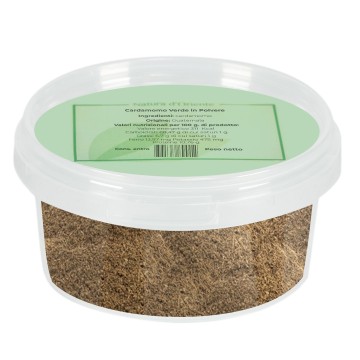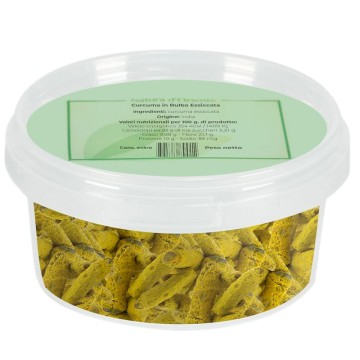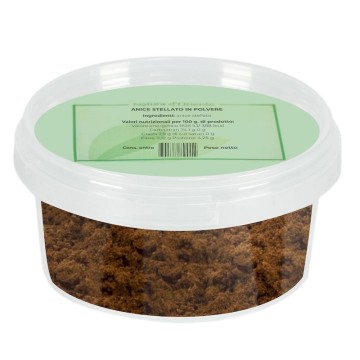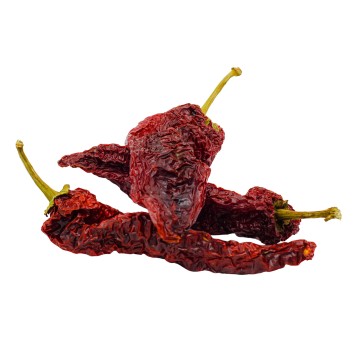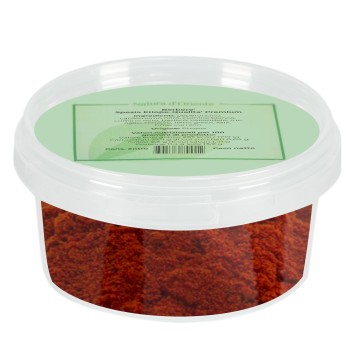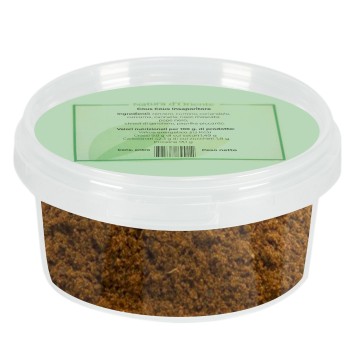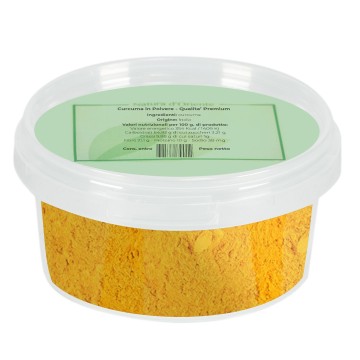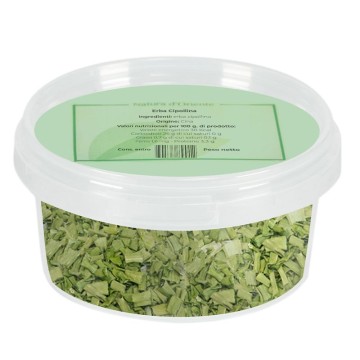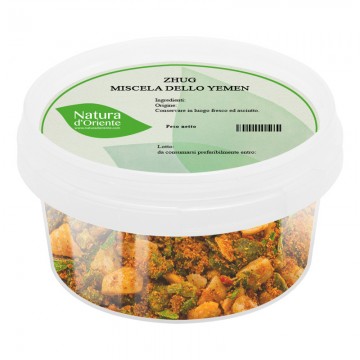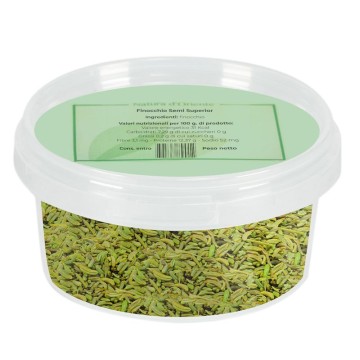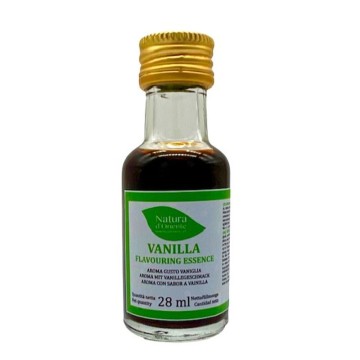Also called Mitmita, this hot and intense African condiment is often used in Ethiopian and Eritrean cuisine, as a version of spicy berbere. Traditionally it is created with particular chillies (piri piri chili) that give a unique spiciness to this blend. They make Mit Mità particularly suitable for beef dishes and to give a strong flavour to many recipes. The distinct spicy notes combine with other spices, for a complex of flavours that also includes citrus and warm notes, with a persistent aroma. The red-orange colour of Mit Mità powder also makes this combination of spices interesting for applying a lively tone to various dishes. There is no single recipe for Mit Mità but, among the numerous versions handed down in the family, the main spices are those present in our proposal, such as cardamom, ginger, garlic, to which are added the typical piri piri chillies and coarse salt. We have introduced other elements present in many Mitmita blends, such as lippia abyssinica and ajowan, typical of the area, rosemary, black sesame.
The ingredient of ground African chillies is essential to make this combination of spices decidedly pungent. It is a particular type of chillies called piri-piri (or peri-peri or even bird's eye), spicier than those used in berberè. They are the fruits of a variety, Capsicum frutescens, which gives a high percentage of capsaicin even in small doses. The piri piri chilli gives a high spiciness (between 50,000 and 70,000 on the Scoville Scale - SHU) and for this reason it is also called the "African Devil".
Among the other properties of this spice combination, we recall the high levels of capsaicin – useful for blood circulation, to stimulate metabolism and to reduce appetite (for those who want to use spices in their diet). In addition, Mit Mità contains minerals, vitamins and antioxidants through its composition rich in beneficial spices and aromatic herbs.
The spices of Mit Mità
Cardamom adds a pungent but balanced flavor to the blend, and a balsamic aroma that evokes eucalyptus and honey.
Chili peppers provide an extra spiciness with an exceptional pungent flavor, and a fruity aroma with slightly sweet notes, which make Mit Mità unique.
How to use Mit Mità in the kitchen
This spice blend is traditionally used in Ethiopian and Eritrean cuisine as a table seasoning, often on a par with our “salt and pepper”. Mit Mità is usually used as a spice base for typical meat dishes, both cooked and raw, but it can also be sprinkled in powder form on various dishes. It is excellent for seasoning food before cooking or for adding heat and flavour to recipes. It provides a complexity of natural, sweet and deep spicy flavours, and in the ground version Mit Mità is convenient to use in the kitchen for any type of preparation. Be careful not to heat it too much in recipes because its spiciness would become stronger. It is best used at the end of cooking, and for seasoning sauces and marinades.
In recipes, the ground powder can be used for a more intense and concentrated addition than freshly ground spices – the quantity can be reduced by half, to give the same flavour.
Savoury recipes: this spice blend can be used to add a spicy flavour to sautéed vegetables, fava bean and legume dishes – very popular on beans. Mitmita can be mixed with cheese (especially Ethiopian Ayib), in pasta sauce, to flavor popcorn or breadcrumbs.
Meat and fish: Mit Mità can be used as a rub and marinade on meats to be grilled or barbecued, or sprinkled after cooking. It can be used to prepare hamburgers and meatballs, evaluating its intense spicy flavor. Excellent on beef, entrecote and steaks, it can add a particular flavor to chicken and lamb; exquisite for breading pork chops, and on grilled white meat skewers. It goes well with white fish, grilled shrimp and shellfish, seafood dishes with calamari, fish fillets dipped in powdered mitmita, salmon meatballs. You can sprinkle a little of the mixture on grilled fish or on foil to flavor it.
Meat and fish: Mit Mità can be used as a rub and for marinades on meats to be grilled or barbecued, or sprinkled after cooking. It can be used to prepare hamburgers and meatballs, evaluating its intense spicy flavor. Excellent on beef, entrecôte and steaks, it can add a particular flavor to chicken and lamb; exquisite for breading pork chops, and on grilled skewers of white meat. It is suitable for white fish, grilled shrimp and shellfish, seafood dishes with calamari, filletsof fish dipped in mitmita powder, salmon meatballs. You can sprinkle a little of the mixture on grilled fish or on foil to flavor it.
Typical cuisine: mitmita can be presented as a condiment on the table, for various dishes, in place of salt and pepper. It can be sprinkled on ful medame (stew of cooked beans served with olive oil and cumin), and is known to marinate traditional dishes such as kitfo (minced beef tartare), to season tere saga (strips of raw meat) or to make a meat stew (wat). In addition, this mixture can flavor injera, the typical Ethiopian and Eritrean bread used to carry food to the mouth that can be dipped in the Mit Mità sauce. If added to the berbere mixture, together they create the new mixture called “awaze” used to marinate meats with the strong flavors of African cuisine.
Marinades: mixed with a drizzle of oil, lemon, salt and garlic, Mit Mità gives an excellent spicy kick with butter, to baste meats and vegetables during cooking.
Sauce: excellent mix to create a sauce with tomato and onion, and can be added to oils to flavour them. It combines well with mayonnaise to accompany hamburgers, potatoes or fried foods; it can be an addition to the famous piri piri sauce.
Desserts and drinks: in “hot” desserts it goes well with chocolate, thanks also to the notes of cardamom, and becomes excellent when combined with cloves. In some cases, it can be added to drinks to increase the heat.
Lamb Chops with Mit Mita with Spicy Fasolia
Ingredients
For the chops: 3 1/2 pounds lamb chops (12 servings) - 1 tablespoon olive oil - 12 long wooden toothpicks for pinning the chops For the mitmita marinade: 2 teaspoons Mit Mita powder - 2 lemons (juice and pulp) - 1 teaspoon ground cloves - 1 teaspoon ground sea salt For the fasolia (spicy vegetable mix): 3 fresh green peppers, sliced into rounds - 250 g green beans, sliced - 180 g carrots, peeled and chopped - 6 potatoes, peeled and quartered - 1 red onion, sliced - 16 cherry tomatoes, sliced half - 6 garlic cloves, peeled and finely chopped - 1 tablespoon grated ginger root - 1 teaspoon ground coriander - 1 teaspoon ground cumin - 1 teaspoon ground black pepper - 2 teaspoons ground sea salt - 3 tablespoons olive oil - 1/3 cup water
Directions
Place the potatoes in a large saucepan with a level teaspoon of salt and enough water to cover them. Place over high heat and bring to a boil. Reduce the heat to low and cook the potatoes for about 7 minutes, until they are almost cooked through. Then add the carrots and beans and cook over low heat for another 3 minutes, until the beans and carrots are al dente and the potatoes are done cooking. Drain the pan and let the vegetables rest in a covered bowl. Make the fasolia sauce by adding 3 tablespoons of olive oil to the saucepan over medium-high heat. Let the pan heat for a minute, add the onions and reduce the heat to medium. Let the onions fry for about 5 minutes, stirring so that they soften and take on color. Now add the tomatoes and continue to fry gently over medium heat for another 5 minutes, until the tomatoes begin to soften. Now add the garlic, ginger, coriander, cumin and black pepper and continue to fry over medium heat for another 5 minutes. Add the water and let the pan come to a gentle boil. Reduce the heat to low and let the sauce simmer, stirring occasionally, for about 5 minutes – until the tomatoes become almost a puree. Good. Turn off the heat and let the sauce rest. Make the mitmita marinade. Combine all the ingredients (Mit Mità powder, lemons, cloves, ground sea salt) in a bowl large enough to hold all the ribs. Using your fingers, coat the ribs with the marinade and set aside for 30 minutes. Take 3 ribs and place them on top of each other, so that the fatty sides form a flat, even edge. Insert three toothpicks evenly spaced between the ribs, so that they are pinned together – calculating that there should be 12 ribs, this will make 4 portions from 3 ribs. They are ready to be seared during cooking.
Proceed with Cooking the ribs, placing a large serving platter in the oven at a low temperature, ready to keep the ribs warm for a few minutes once cooked. To cook the ribs, use a large, thick saucepan, so that you can sear the fatty sides of all at the same timesides of the ribs.
Place the pan over high heat and add a tablespoon of olive oil. Once the oil is hot, add the ribs, fat side down. Let them sear over high heat for about 2 minutes, until they are crispy. Reduce the heat to medium-high and remove the four toothpicks. Quickly remove the ribs and return 6 of them to the pan, in a single layer and spaced apart. Let them fry for about 3 minutes on each side over medium-high heat, until they are a deep golden brown. Now that they are done, place the ribs on the warmed plate and finish cooking the fasolia for the last few minutes.
Heat the sauce over medium-high heat until it begins to simmer, then carefully stir in the beans, carrots and potatoes. Lower the heat to medium and stir the pan a couple more times so that the vegetable trio heats through on low heat. Finished and ready to be served Ethiopian style: place the fasolia on the heated serving dish and arrange the ribs on top in a circle, so that diners can serve themselves.
Origins and History of Cultivation
The origin of the Mit Mità spice blend, or mitmita, can be traced back to the time in Ethiopia when there was an independent kingdom of Axum (or Aksum), which arose in the Iron Age between the 1st century BC and the 8th century AD. This kingdom by the Red Sea controlled the Silk Road, thanks to its strategic position on the trade routes between India and the Mediterranean (in the Horn of Africa, north of Ethiopia and present-day Eritrea). The Silk Road, active for thousands of years, connected Central Asia and Europe, bringing distant spices, as well as fabrics and fine goods, even by sea (as the Aksumites did with their ships). From then on, traders brought exotic spices such as ginger, black pepper, cinnamon, cardamom, nutmeg, cloves and turmeric to Africa.
A turning point came later, in the sixteenth century, when another important element arrived that would give Mit Mità its character: the South American chilli pepper. It was Portuguese merchants who spread it to many countries, including Africa and Mozambique. This is how the custom of using African chilli pepper in cooking was born, especially among the Swahili people. The plant was easily grown, as a low bush, with short leaves and small berries with a pungent flavour. They were called by the Swahili name, pilipili, which means “pepper”, and since then the African chilli pepper has now been widely known as peri-peri. The Mit Mità spice mix is made from these peppers and other spices, with a recipe that changes from family to family, handed down for generations in different ways also depending on the region. In fact, there are numerous versions. The mix is in any case quite spicy, in line with Ethiopian cuisine which loves strong flavors. The contribution of spices is also due to the need to preserve food or recover leftovers in popular cuisines made of poor dishes.
The peri-peri chili pepper plant (or piri piri) is a cultivar of the Capsicum frutescens or Capsicum annuum species, native to Ethiopia. It belongs to the Solanaceae family. It is a resistant plant, does not need much water and appreciates the African heat. The temperatures are perfectly suited to the growth of small chili peppers, which go from green to shiny red as they ripen towards maximum heat. It has a subtle but intense spiciness, with smoky notes and high heat (between 50,000-100,000 Scoville heat units).

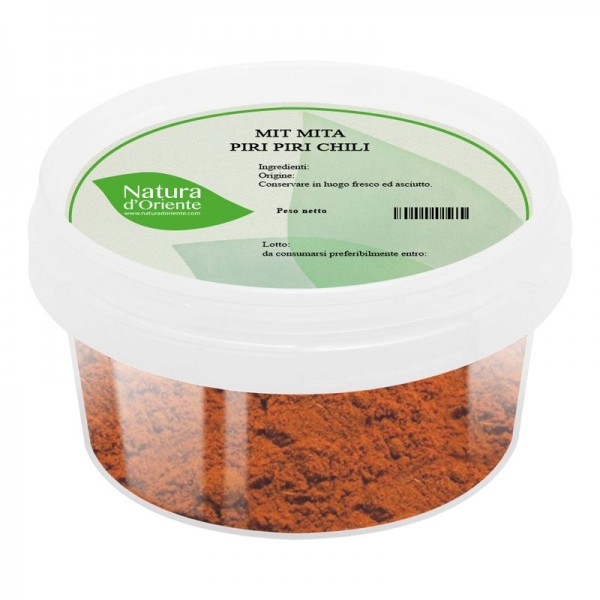



 No reward points for this product.
No reward points for this product.

